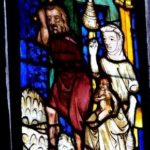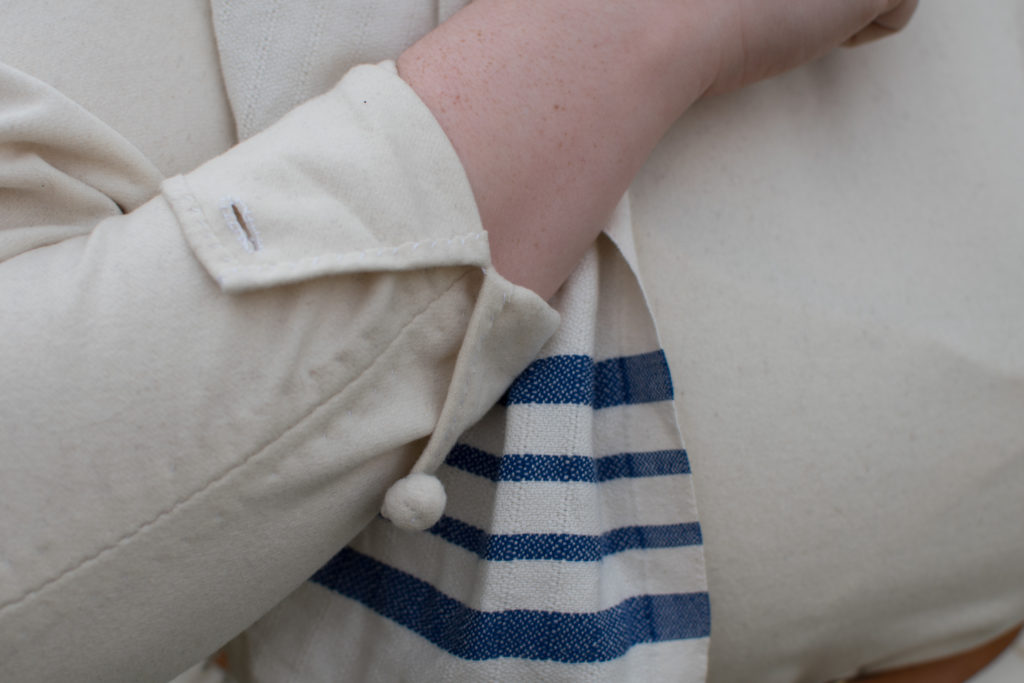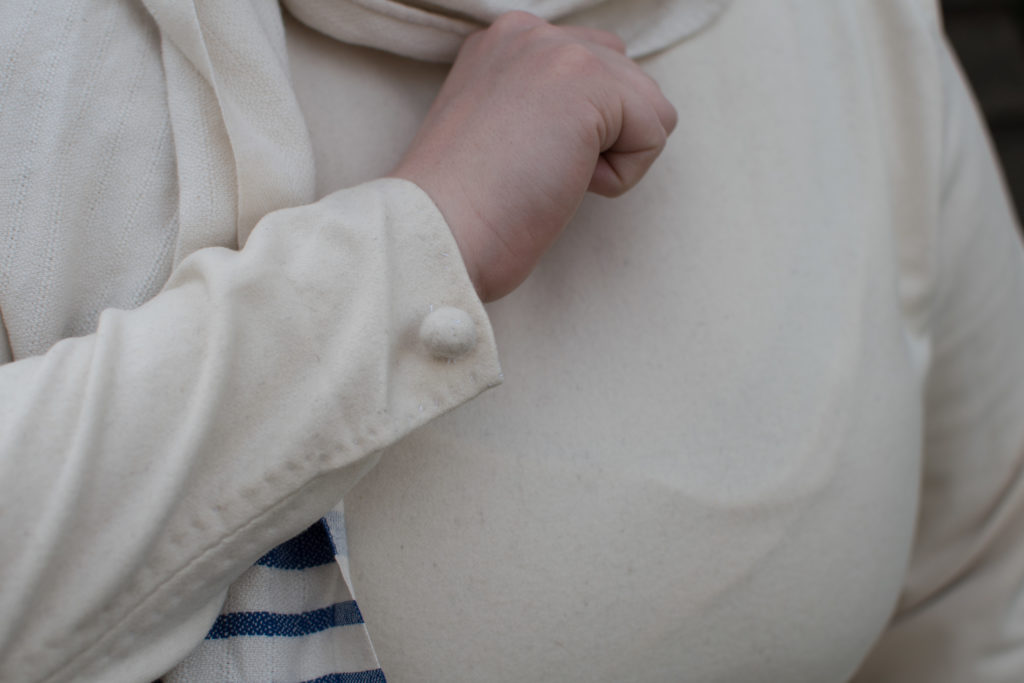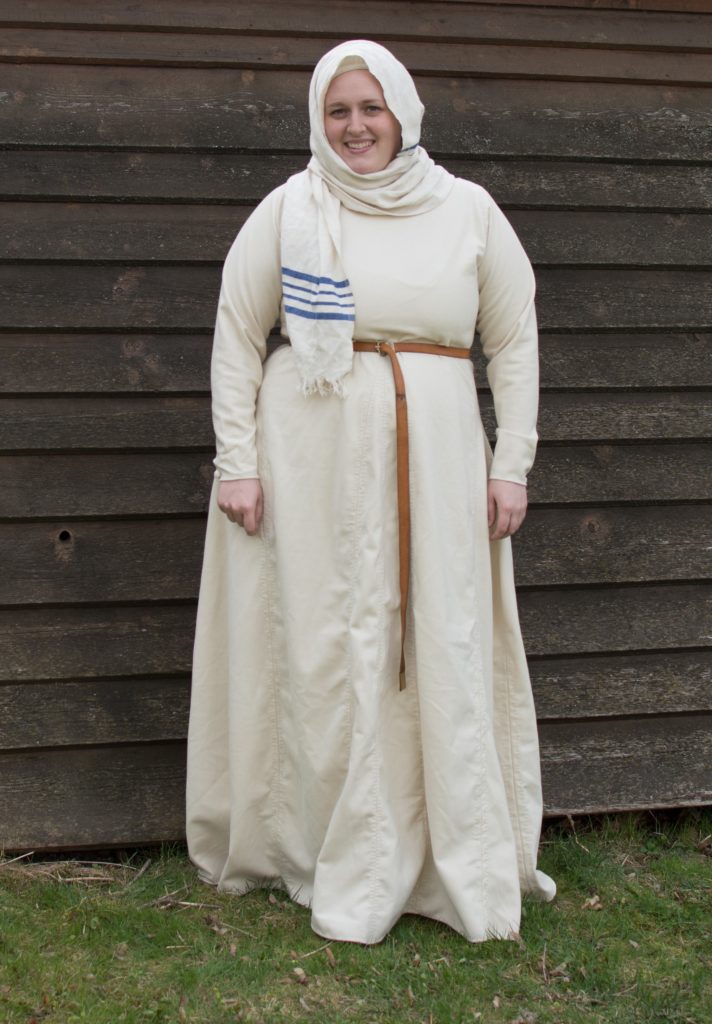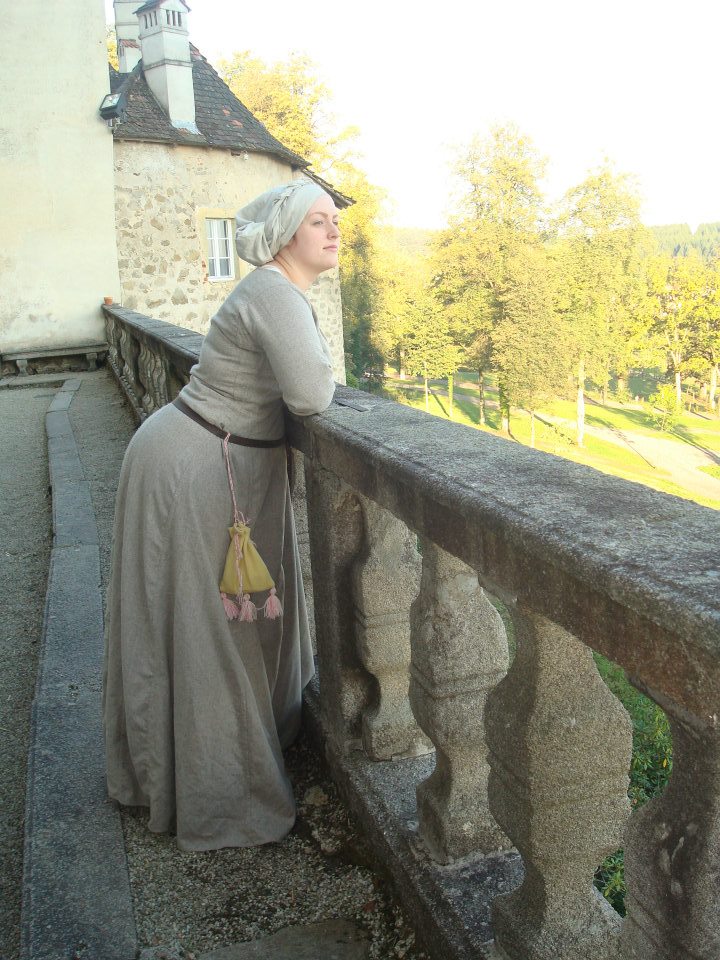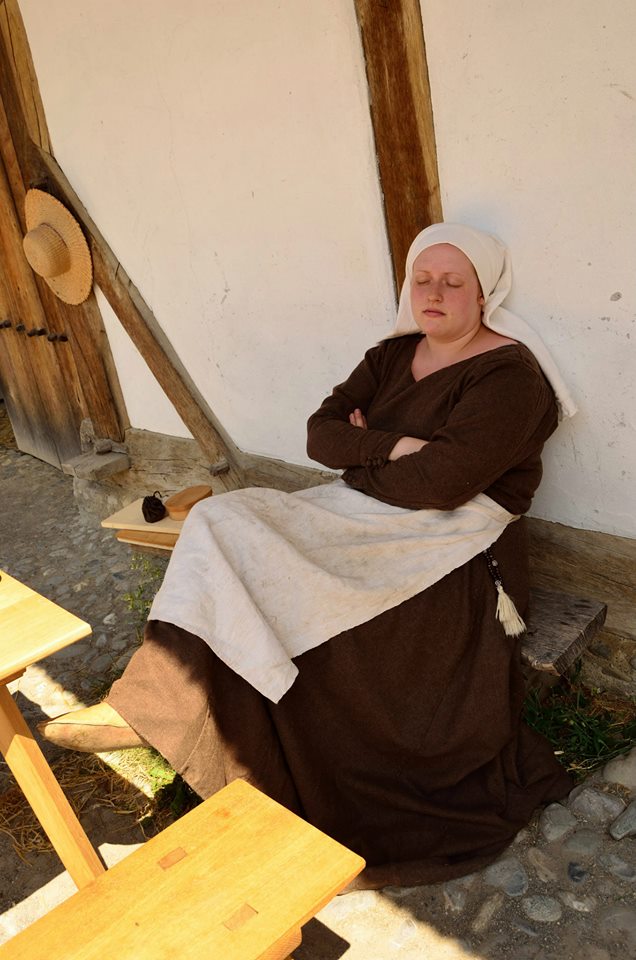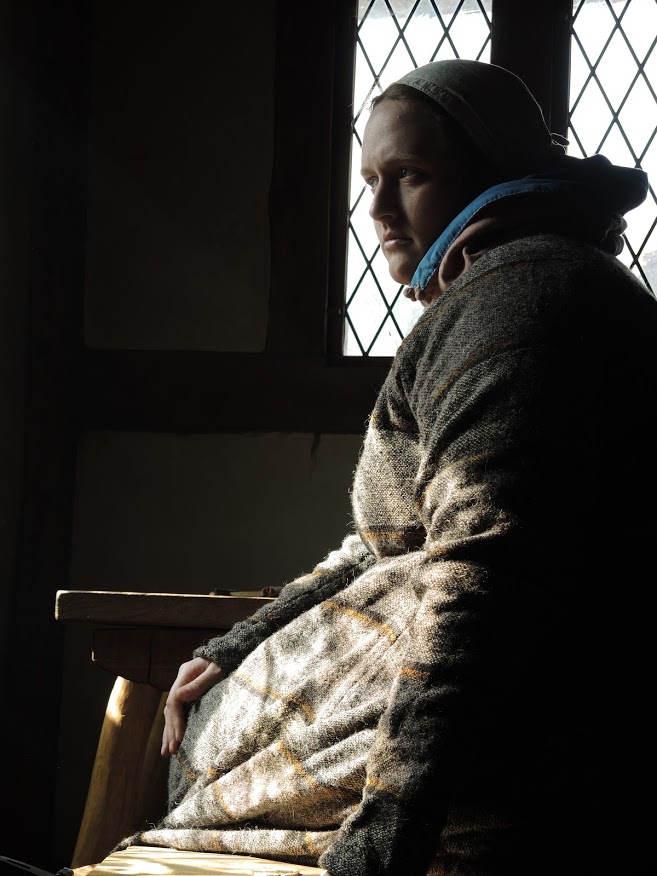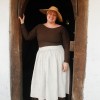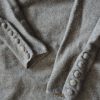White as a sheet – a simple dress
Actually my plan for my 14th century hobby was to have a full citizen-costume ready by the start of the new season. Unfortunately that was more difficult than I thought due to delivery problems for the fabric. And since I really did not want to go another season with just one wearable dress, half eaten by moths, I needed a dress to change into during longer events. Again in a very cheap colour. In white.
Some picture inspiration:
I have been collecting inspirational pictures for quite some time, since I have been fascinated by white and undyed dresses. Most of the time you tell beginners “go with dyed fabrics”, to make it simple to understand for them. But sometimes, the exceptions from this rule of thumb are nice to put into an impression as well.
There are different occasions, in which white dresses appear. They can be seen in the clothing of monks and nuns, pure white dresses become popular during the end of the 14th and in the 15th century as a statement of the higher classes against the common style of clothing and then there is white/undyed wool for the very simple folks, just because it is cheap.
Here are some of the inspirational pictures I have used for my reconstruction:
- Maria Straßengel, um 1350-60
The pattern:
In original pictures from the 14th century, many variations of simple dresses can be seen, from very loose gowns with fitted sleeves to pretty fashionable fitted torsos and wide skirts, many variations can be seen.
I have decided to use a pattern after Herjolfsnes that works with fitted side gores, to bring the dress closer to the waistline. Yet I left a little air to breathe so I can do housework in it.
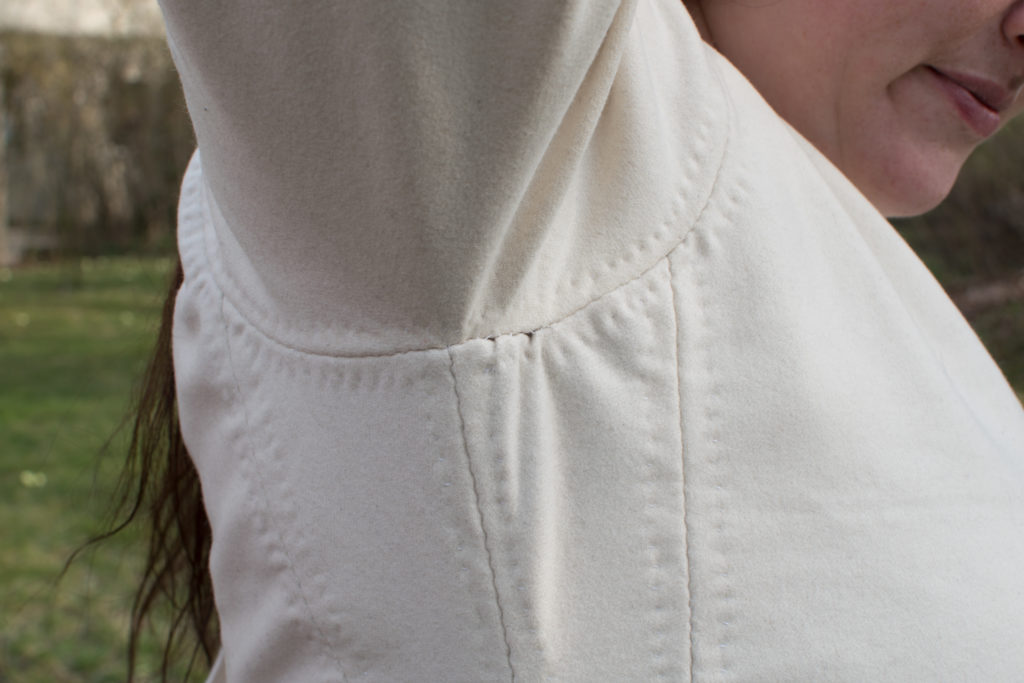
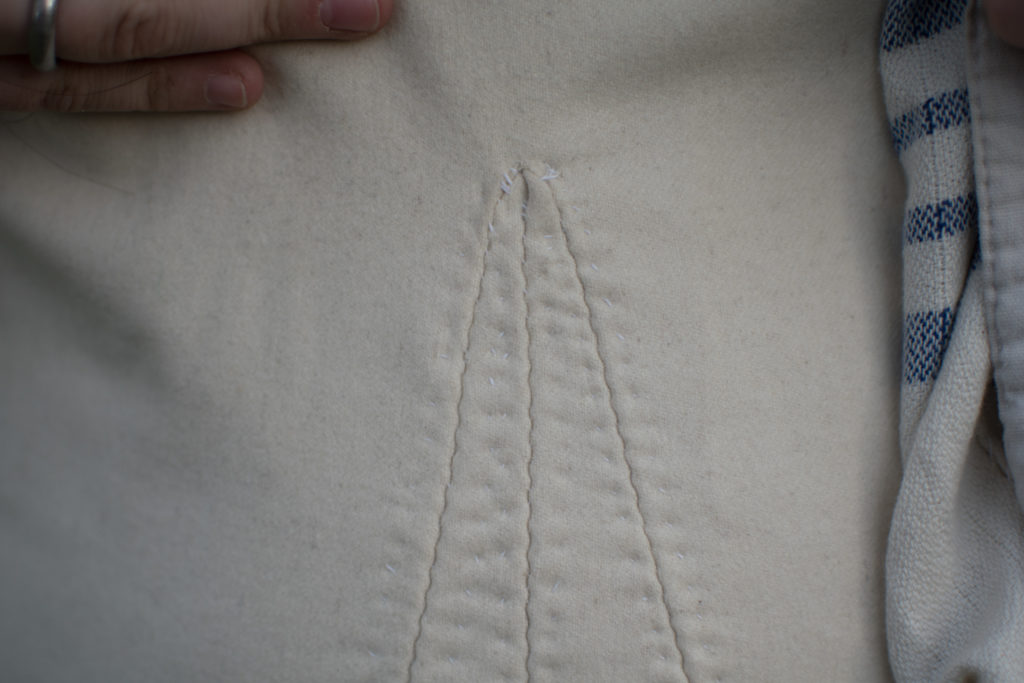
For the sleeves, I was torn between no buttons and buttons up to the middle of my lower arm. I decided to leave it simple with just one button which enables me to keep them tucked up during work.
As a material I used some wonderfull felted woolen twill. And I want to be honest, when we burned one piece in order to see what material it was, we saw that there is probably parts of synthetic fibres in the wool, which would be a No-Go for plant dyeing, but for a white dress, that does not matter and I really don’t mind since neither me nor the visitor can see or feel any of that. For sewing, I used white linnen thread.
And this is, what it looks like. I could use this dress for anything between 1330 and 1400, since I portrait just simple servants and maids mostly. But my main impression is 1350 which this is perfect for.
So, I really need some more colour in my reenactment life soon. :-)
Related Posts
The following posts might interest you as well:




